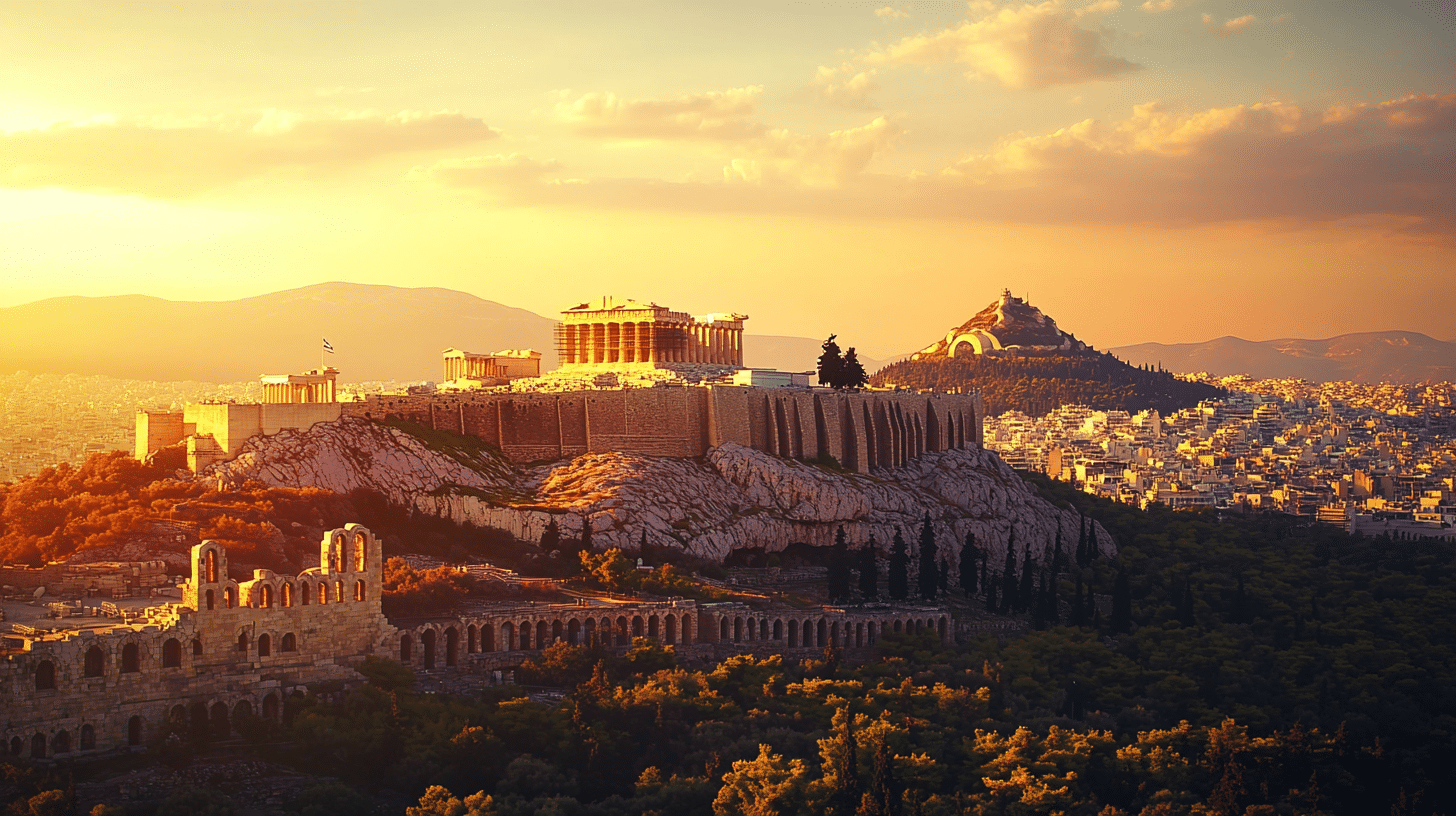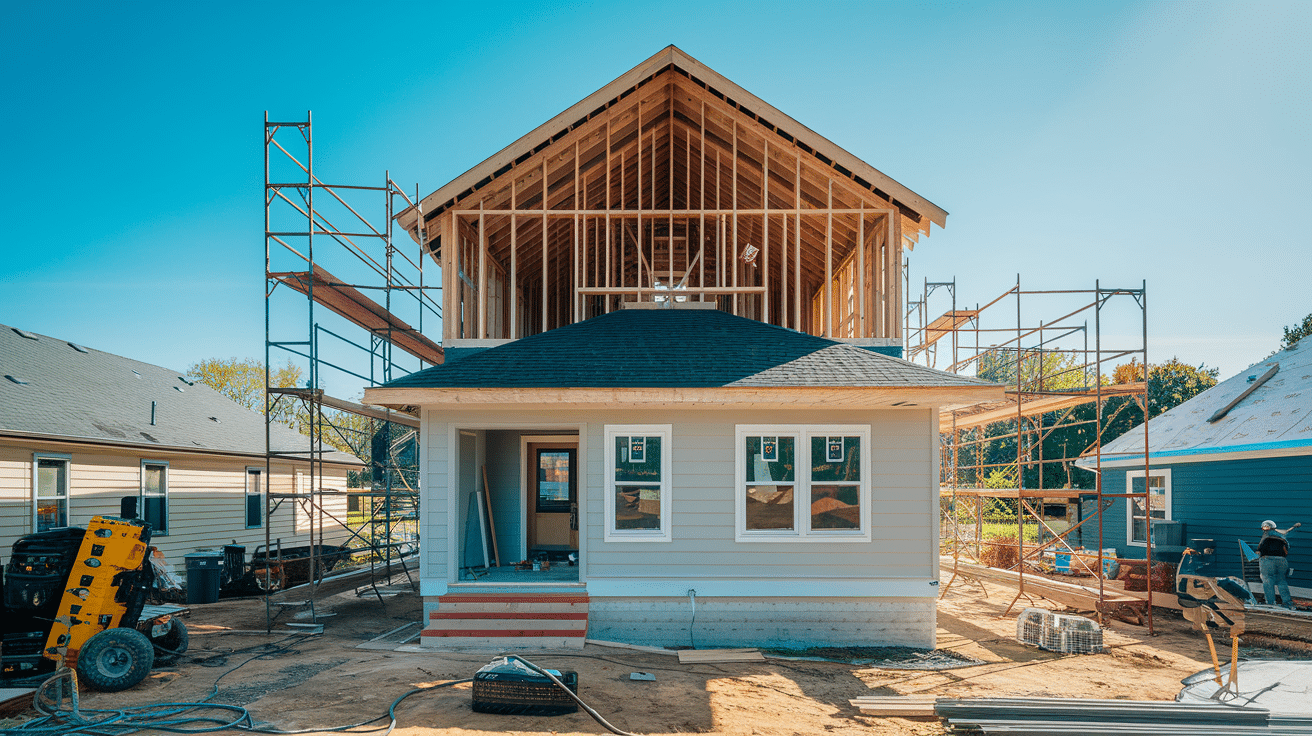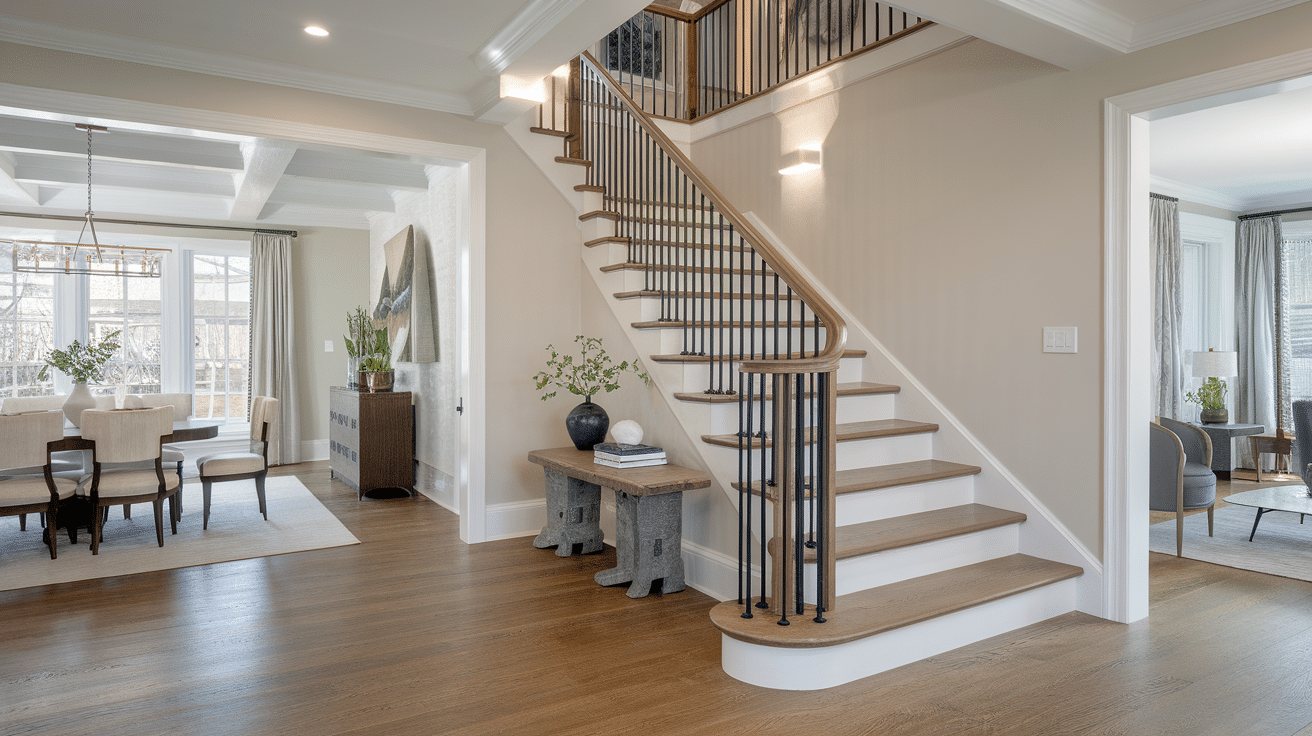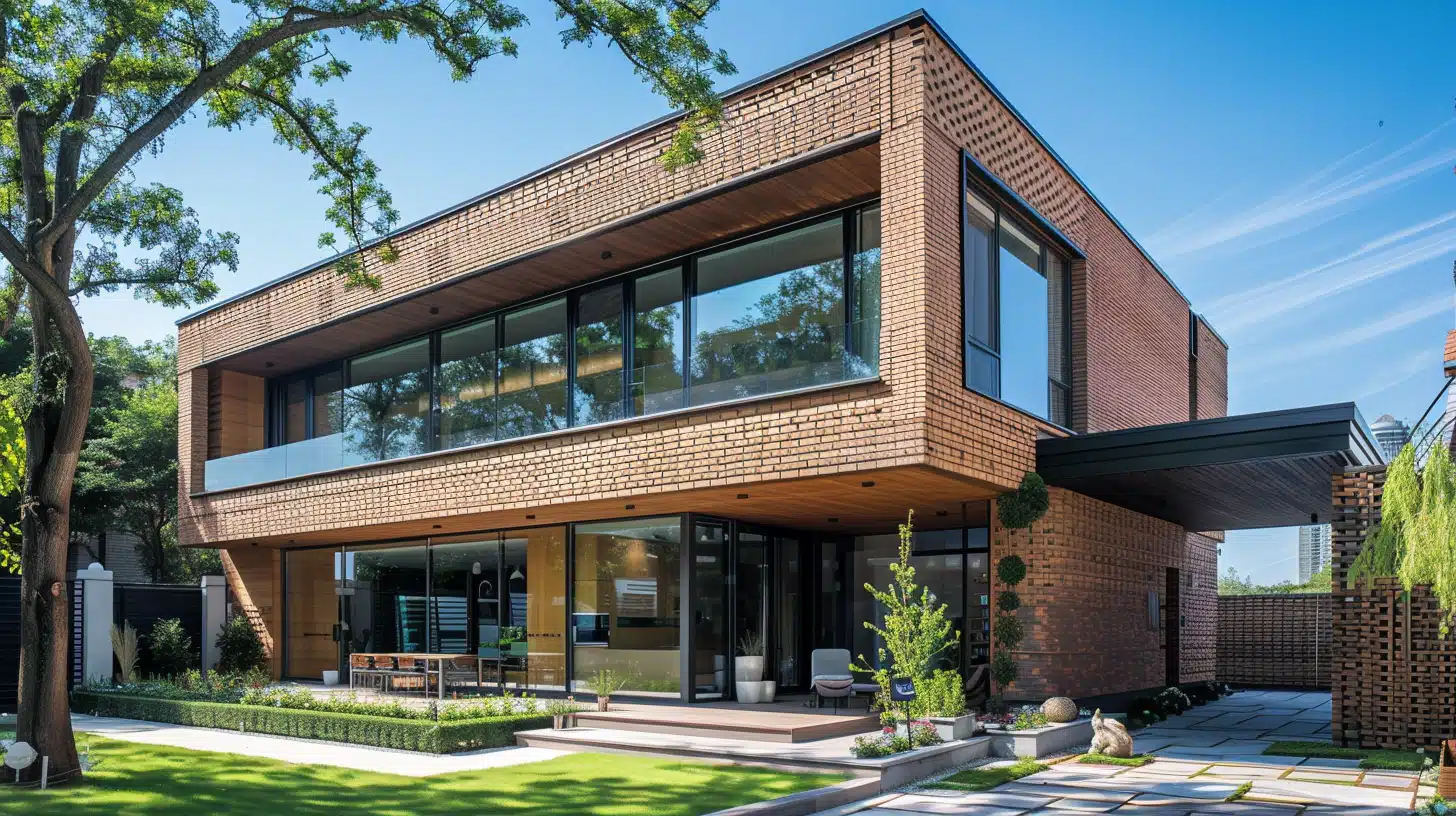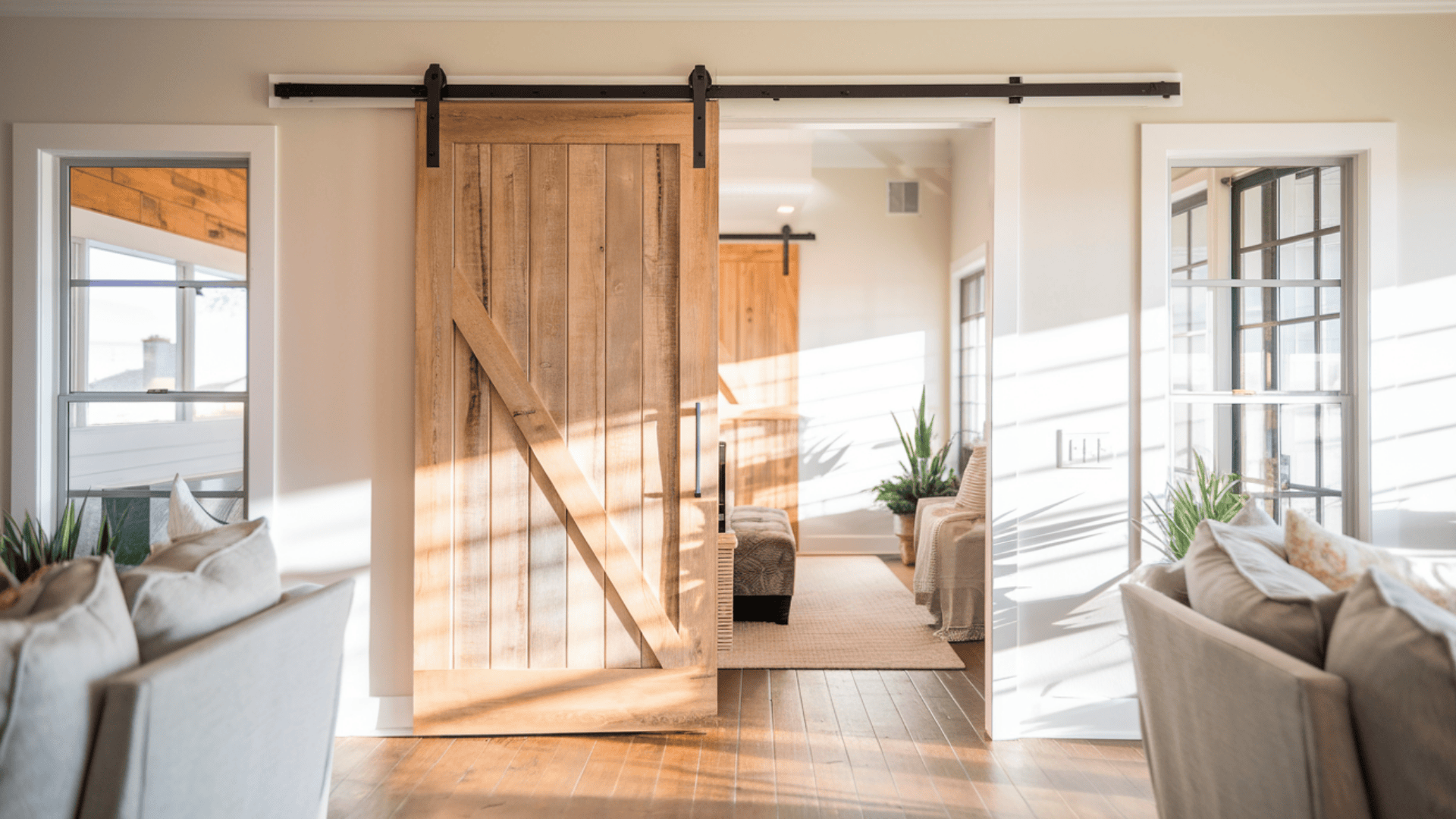19 Famous Greek Buildings Through Time
Close your eyes and picture this: You’re standing before the Parthenon, its golden-white marble glowing warmly in the afternoon sun.
This isn’t just any old ruin – it is a 2,500-year-old masterpiece that still takes people’s breaths away today.
Built by hand without any modern tools, the Parthenon shows us how ancient Greeks mixed perfect math with beautiful art to create something timeless.
Every column and carving tells a story about gods, goddesses, and the brilliant minds who created these wonders.
In this blog, we’ll cover both famous landmarks and hidden surprises.
You’ll learn how clever builders designed temples that play tricks on your eyes, see quiet ruins where history feels alive, and see how today’s architects still use these ancient ideas.
Iconic Ancient Greek Buildings
Ancient Greek architecture represents a golden age of design, where mathematical precision met artistic brilliance.
These builders created a perfect balance between practical needs and beauty, using careful measurements and optical tricks to make buildings look perfectly straight and balanced.
They understood how the human eye sees things and adjusted their designs so columns that look straight were actually curved.
This careful attention to both math and art created buildings that still inspire today, showing us how technical skill and creative vision can work together to make something truly lasting.
1. The Parthenon
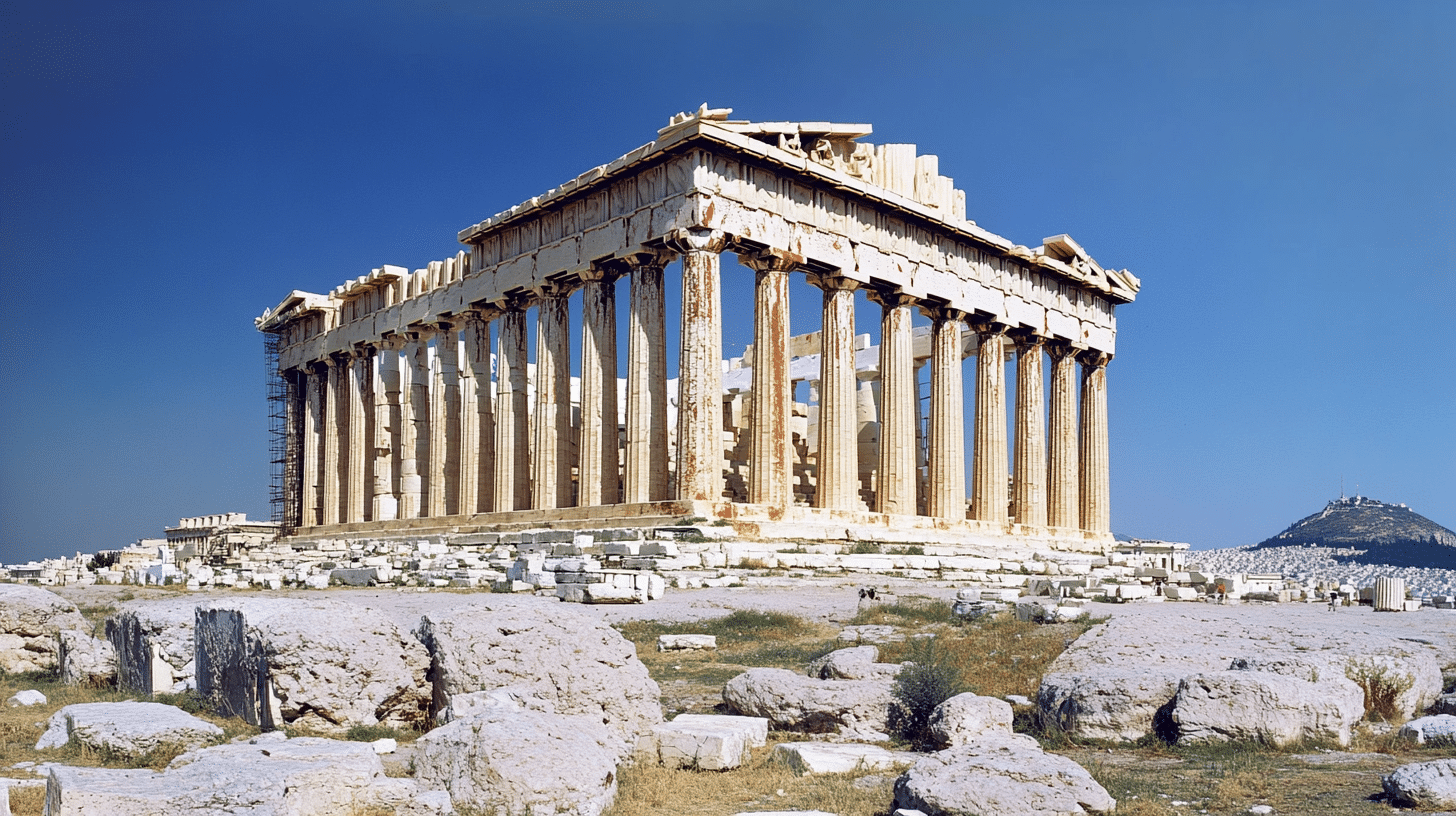
Perched atop Athens’ Acropolis, the Parthenon is a masterpiece of architectural perfection.
Constructed between 447 and 432 BCE, this Doric temple dedicated to Athena showcases mathematical precision in every line and angle.
Its rich history spans multiple eras – from a religious temple to a Christian church and later a mosque during Ottoman rule.
This adaptability highlights the building’s remarkable significance beyond its original purpose.
2. The Temple of Olympian Zeus
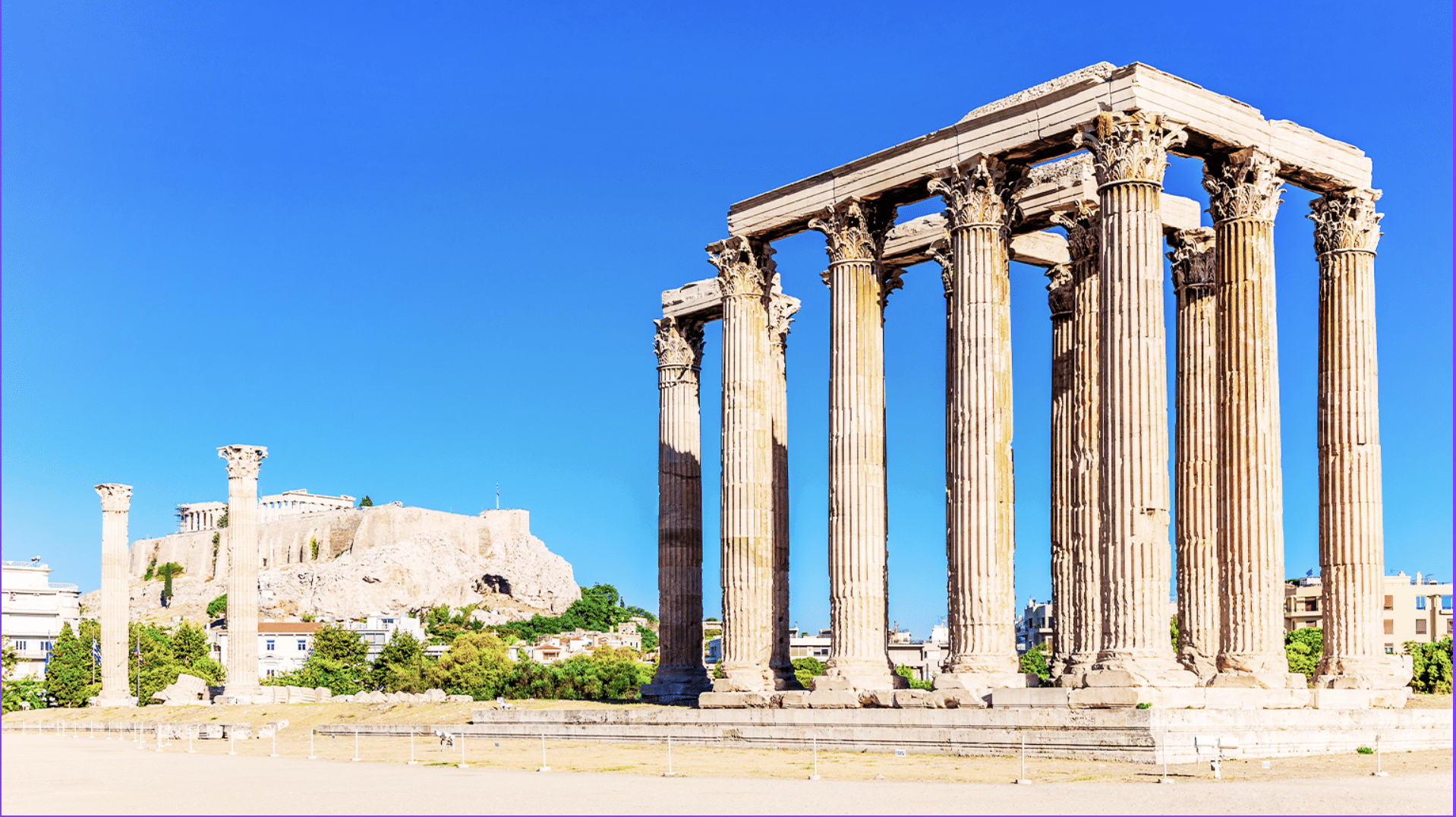
A monument of extraordinary scale, this temple represents the grandeur of Greek religious architecture.
It was initiated in the 6th century BCE and completed by Roman Emperor Hadrian, and its construction spanned nearly 650 years.
Today, only 15 of its original 104 massive columns remain, yet they still inspire awe with their immense presence.
3. The Erechtheion
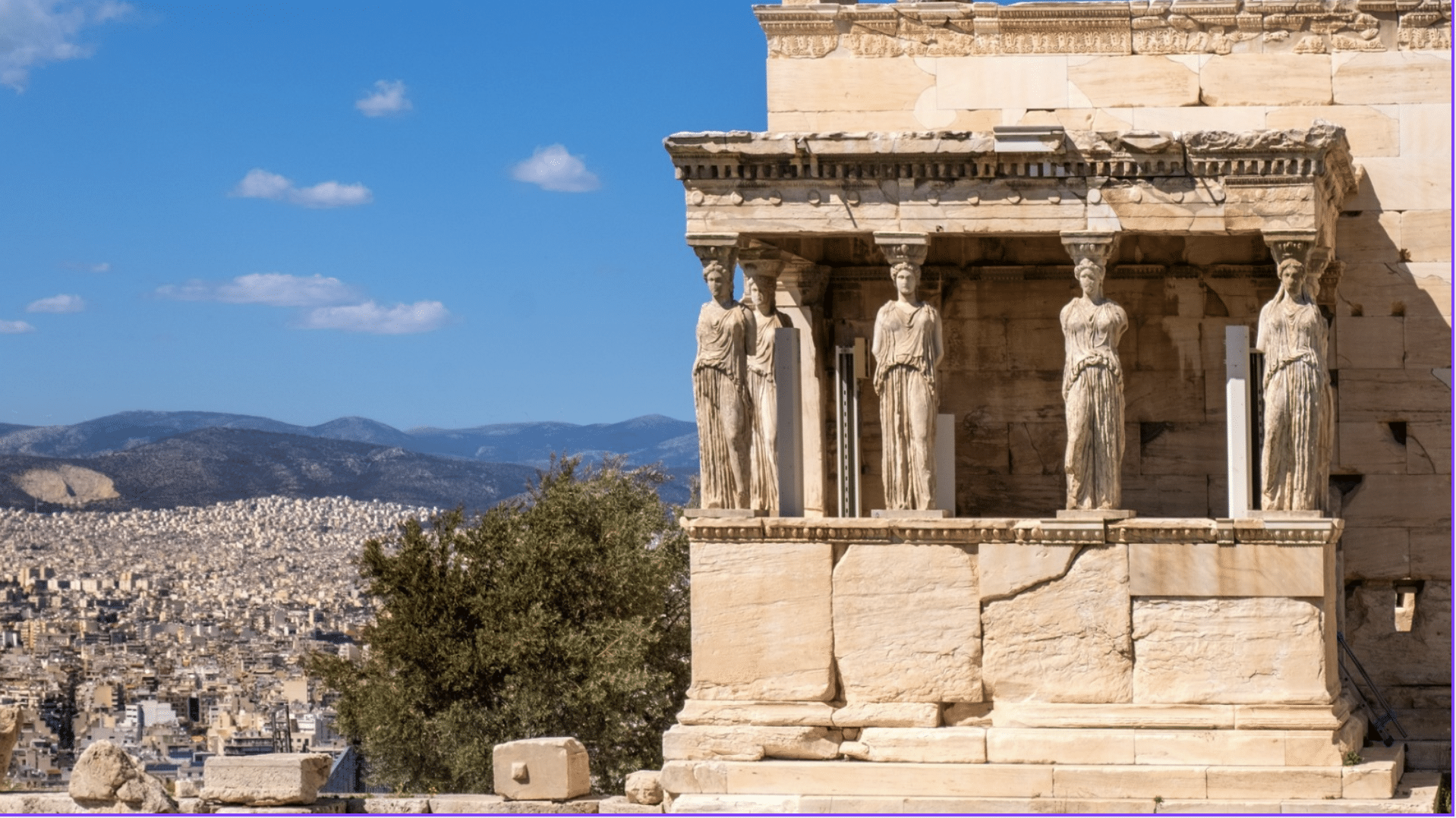
Located on the Acropolis, the Erechtheion stands out with its unique design.
Its most famous feature is the Porch of the Caryatids, which features six female statues serving as columns.
These sculpted figures replace traditional supports, creating an architectural statement that defies conventional design.
4. The Theatre of Epidaurus
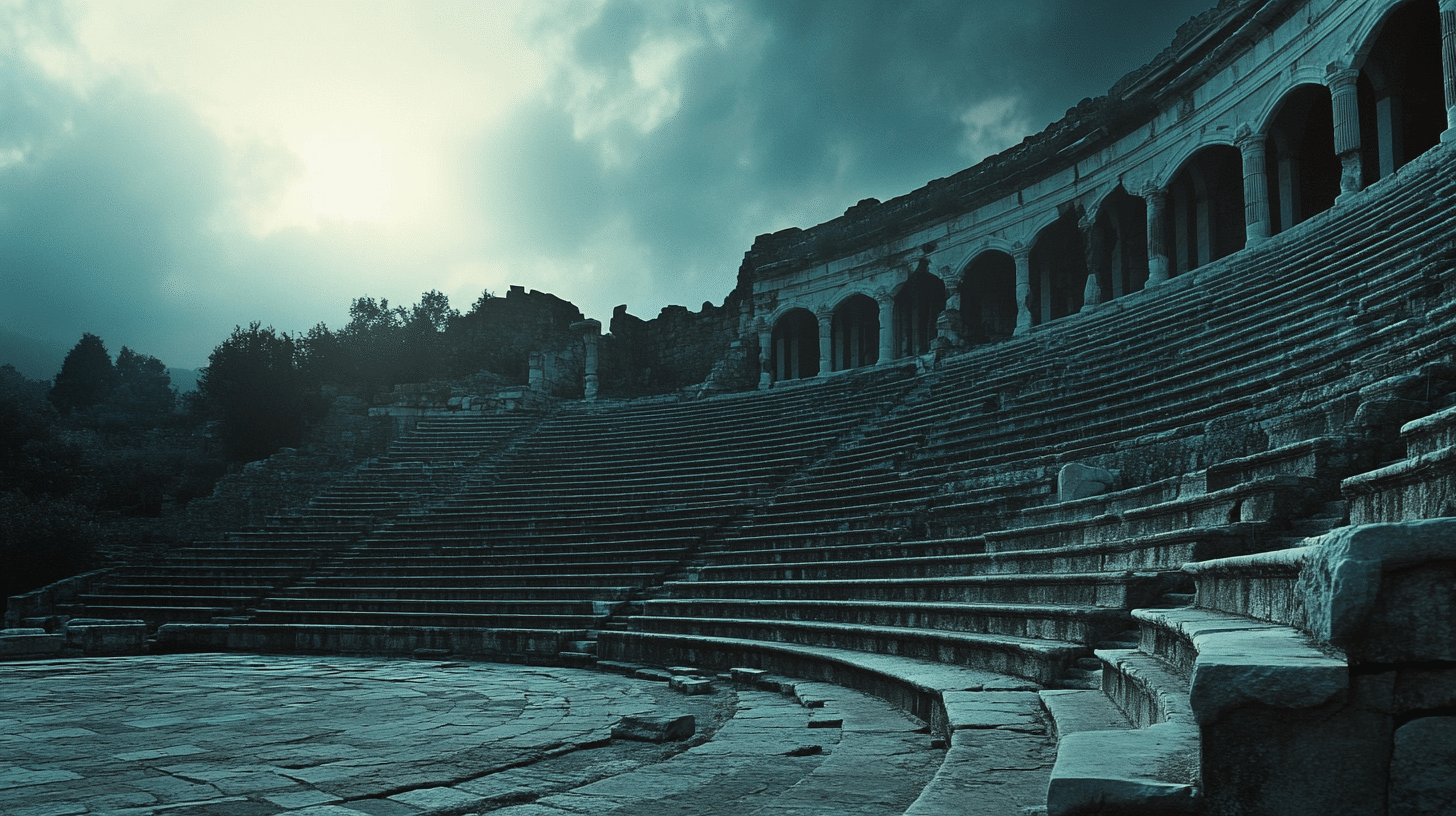
More than a building, the Theatre of Epidaurus represents cultural expression at its finest.
Built in the 4th century BCE, it boasts exceptional acoustics—a whisper on the stage can be heard clearly in the highest row, a testament to the ancient understanding of sound and space.
5. The Temple of Apollo at Delphi
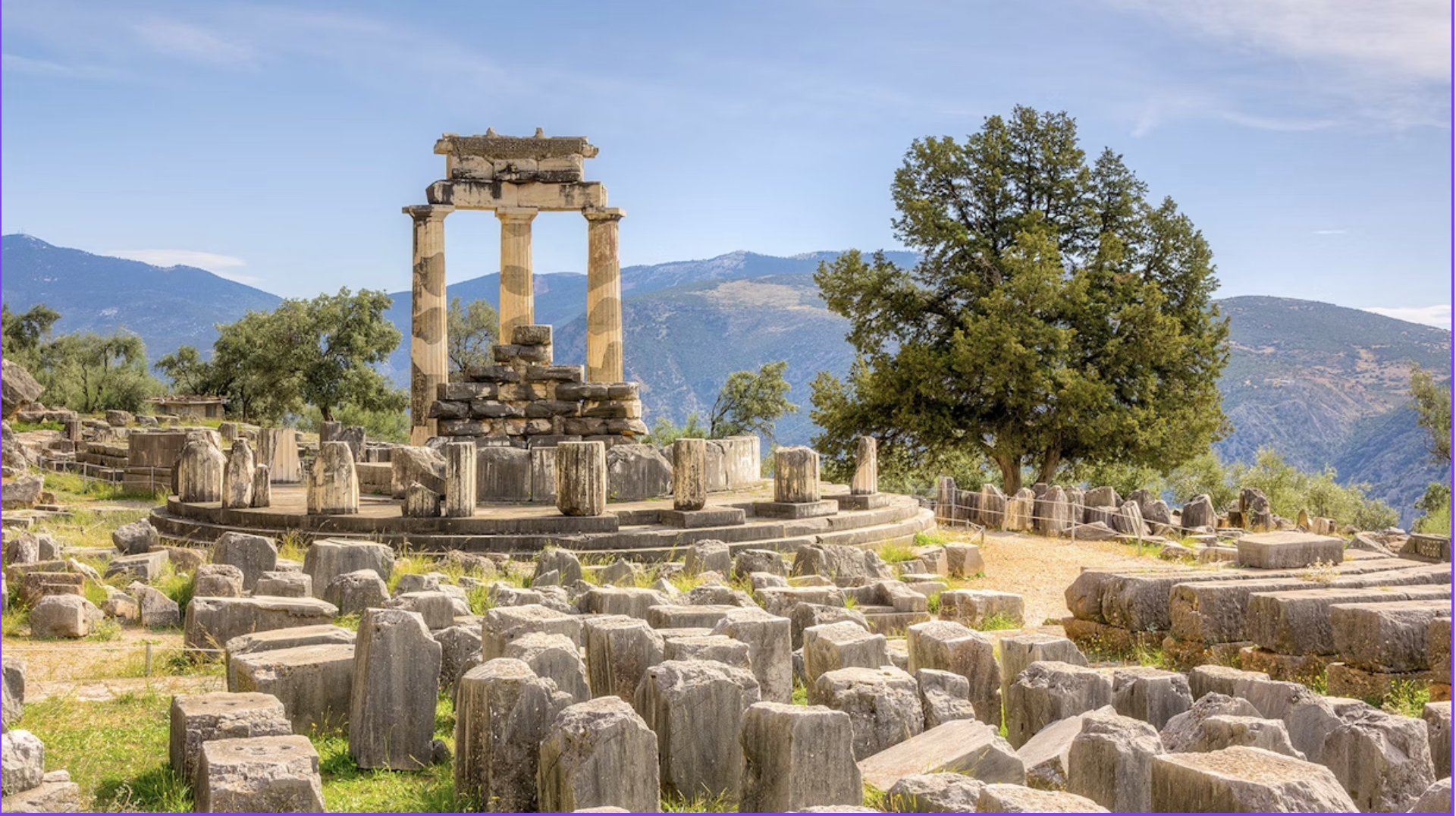
Nestled on Mount Parnassus, this temple was a crucial religious center.
Home to the famous Oracle, it eshows how Greek architecture integrated spiritual significance with physical design.
Its strategic location reflects the deep connection between human-made structures and natural landscapes.
Lesser-Known Greek Buildings with Rich Histories
Beyond the famous landmarks, numerous architectural gems reveal the depth of Greek building techniques.
These hidden treasures – small countryside temples, ancient water systems, and remote sanctuaries – often tell more intimate stories about Greek life than their famous counterparts.
With fewer crowds, these sites let visitors experience history up close, noticing small details like mason’s marks on stones or worn steps that show centuries of use.
These overlooked masterpieces prove that Greek architectural brilliance extended far beyond the well-known sites, reaching into every corner of their world.
6. The Stoa of Attalos
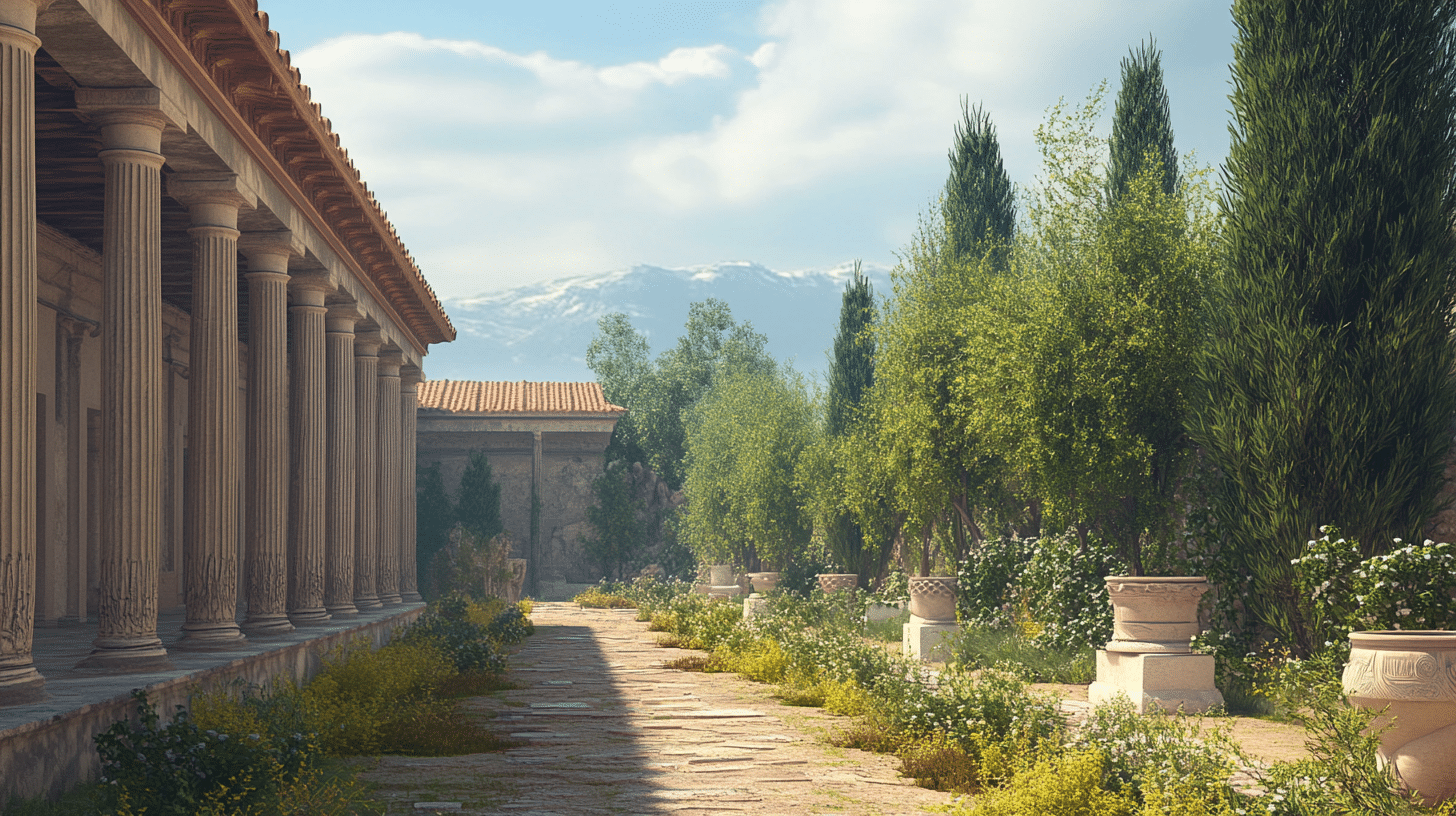
This long, covered walkway once housed shops and sellers in ancient Athens.
Today, it serves as a museum where visitors can see items from daily life in ancient Greece.
The building has two floors with columns and was carefully rebuilt in the 1950s using the same materials and methods as the original.
7. The Temple of Aphaia
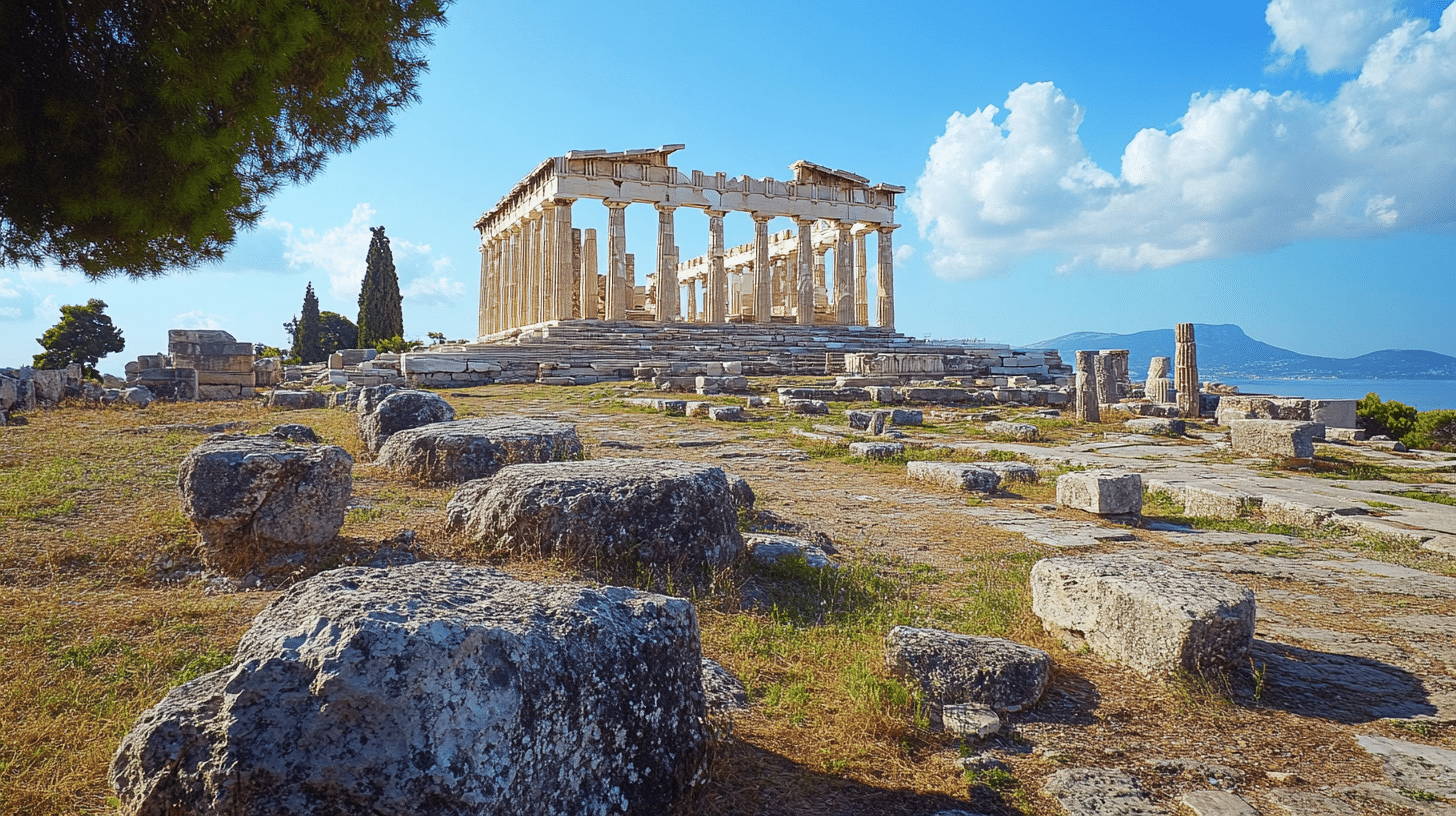
This temple sits on a hill with a view of the sea. What makes it special is how it lines up with the sun during certain times of the year.
The builders carefully placed it to match natural events in the sky, showing how ancient Greeks combined building skills with their knowledge of the stars.
8. Temple of Hephaestus
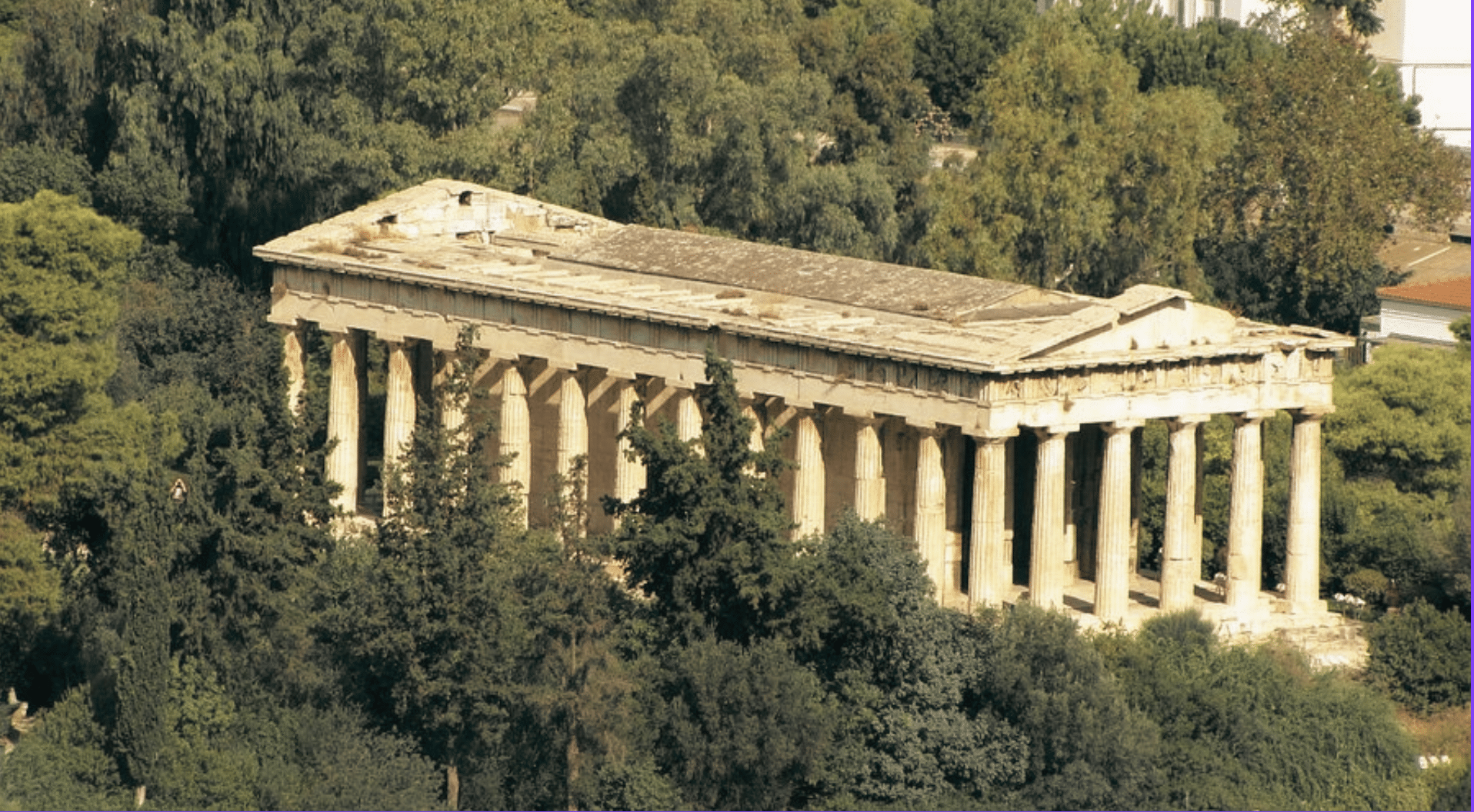
This well-kept temple is almost complete after more than 2,400 years.
Built to honor Hephaestus, the god of metalwork and fire, it has strong Doric columns and detailed carvings.
It stayed in good shape because it was used as a church for many years, which helped protect it from damage.
9. Sanctuary of Artemis Gorgo

This early temple shows some of the first uses of the Doric style in Greek buildings.
Its walls feature carvings of monsters and heroes from Greek stories.
The temple was built to honor Artemis, the goddess of hunting and the moon, and shows how important these gods were to the local people.
10. Temple of Hera
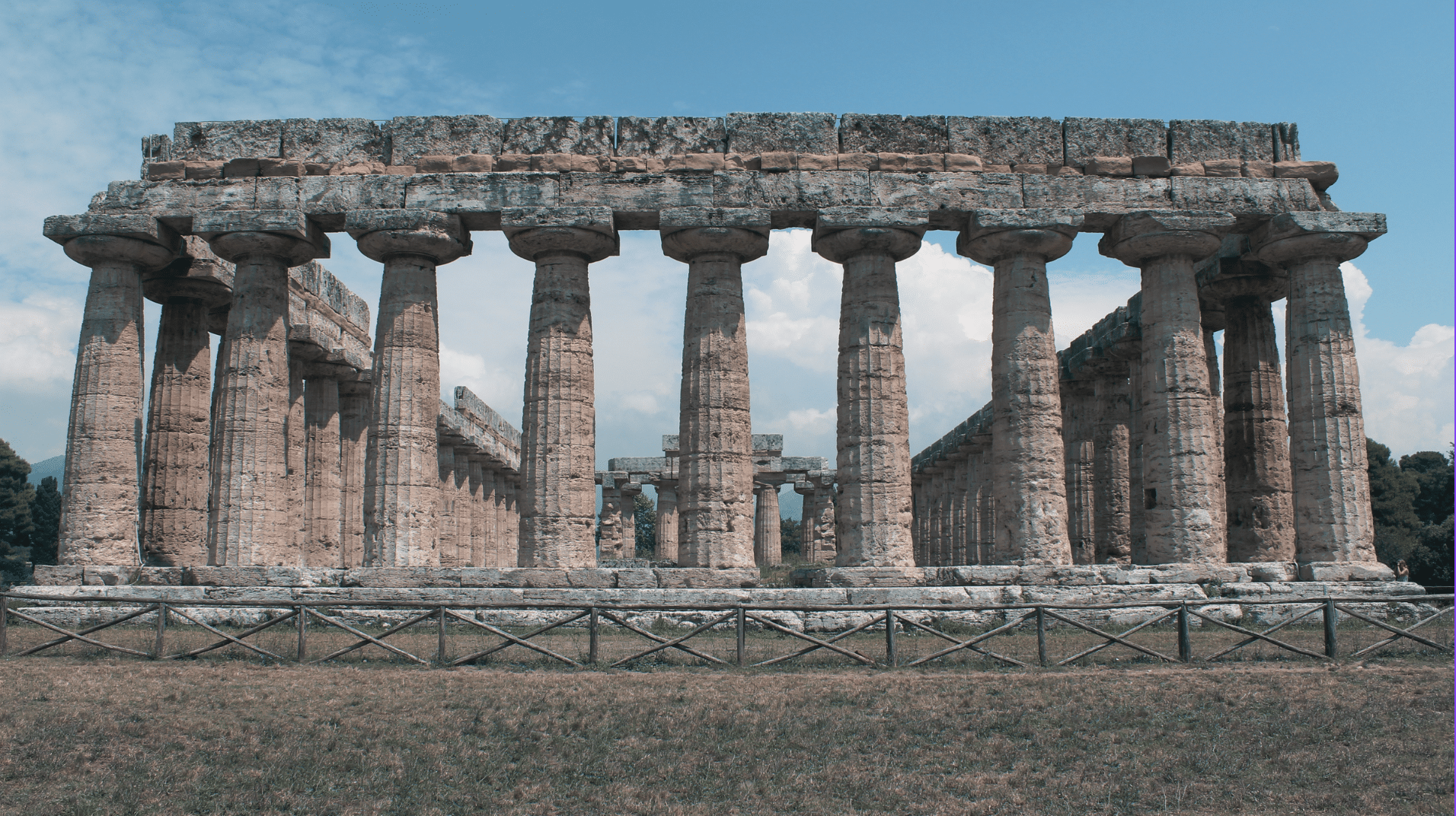
This is one of the oldest temples still standing in Greece, dating back to around 650 BCE.
It was built for Hera, the wife of Zeus and queen of the gods.
The temple originally had wooden columns that were slowly replaced with stone ones over time, which is why the remaining columns are of different sizes and styles.
11. Ancient Agora
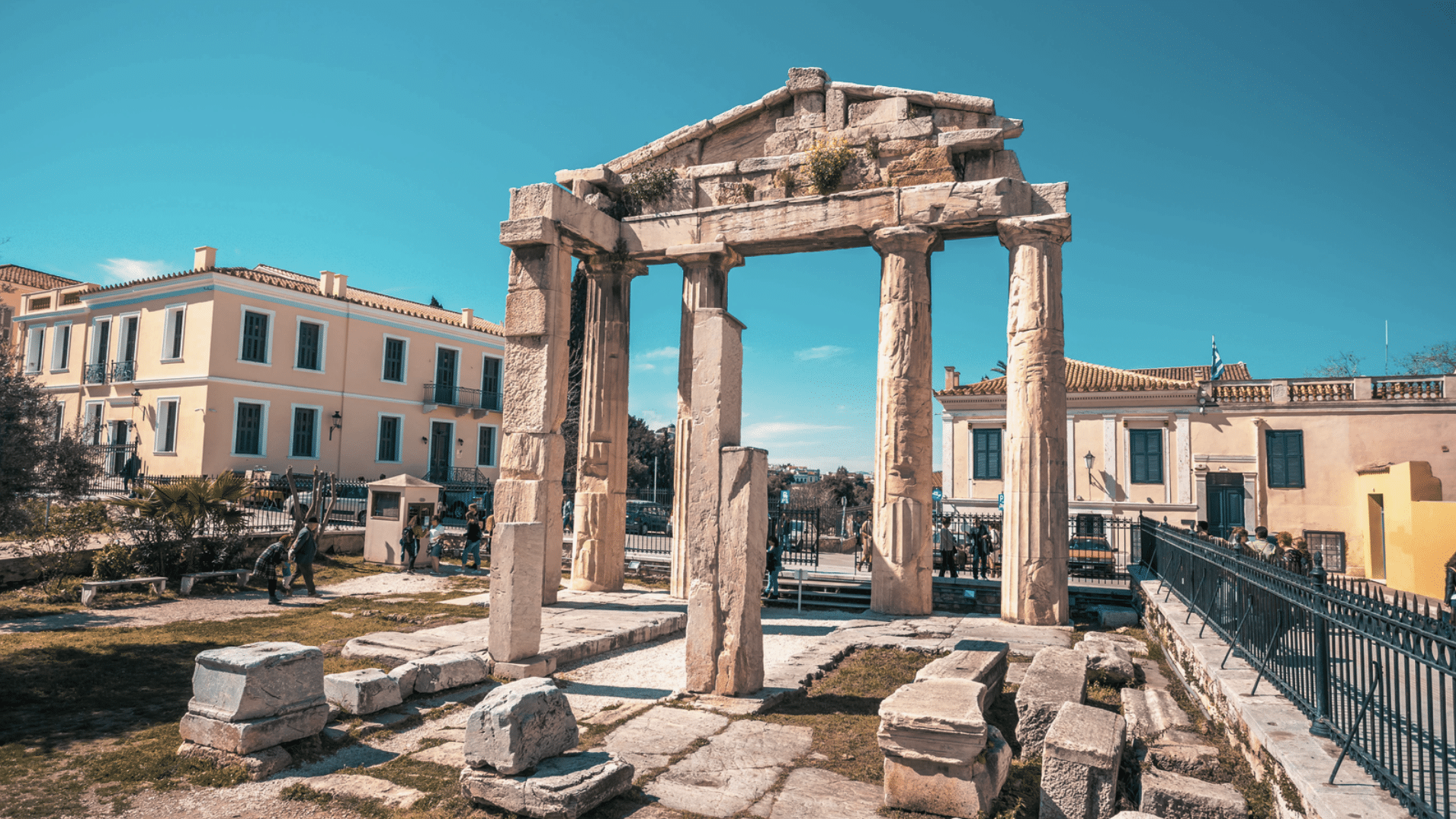
This open space was the center of daily life in ancient Athens.
People came here to shop, talk about politics, and meet friends. The area contains many important buildings, including courts, meeting halls, and temples.
Walking through the Agora today gives visitors a real sense of how ancient Athenians lived and worked together.
Famous Greek Theaters and Public Spaces
Greeks designed impressive spaces for performances and public gatherings by using natural landscapes and clever architecture.
These venues provided excellent views and acoustics, allowing clear communication and a powerful experience. This smart design helped Greek leaders shape public opinion and showcase their authority effectively.
By controlling the environment, they reinforced their reputation, united the community, and gained support for expanding their influence and conquering new territories.
12. Theatre of Dionysus
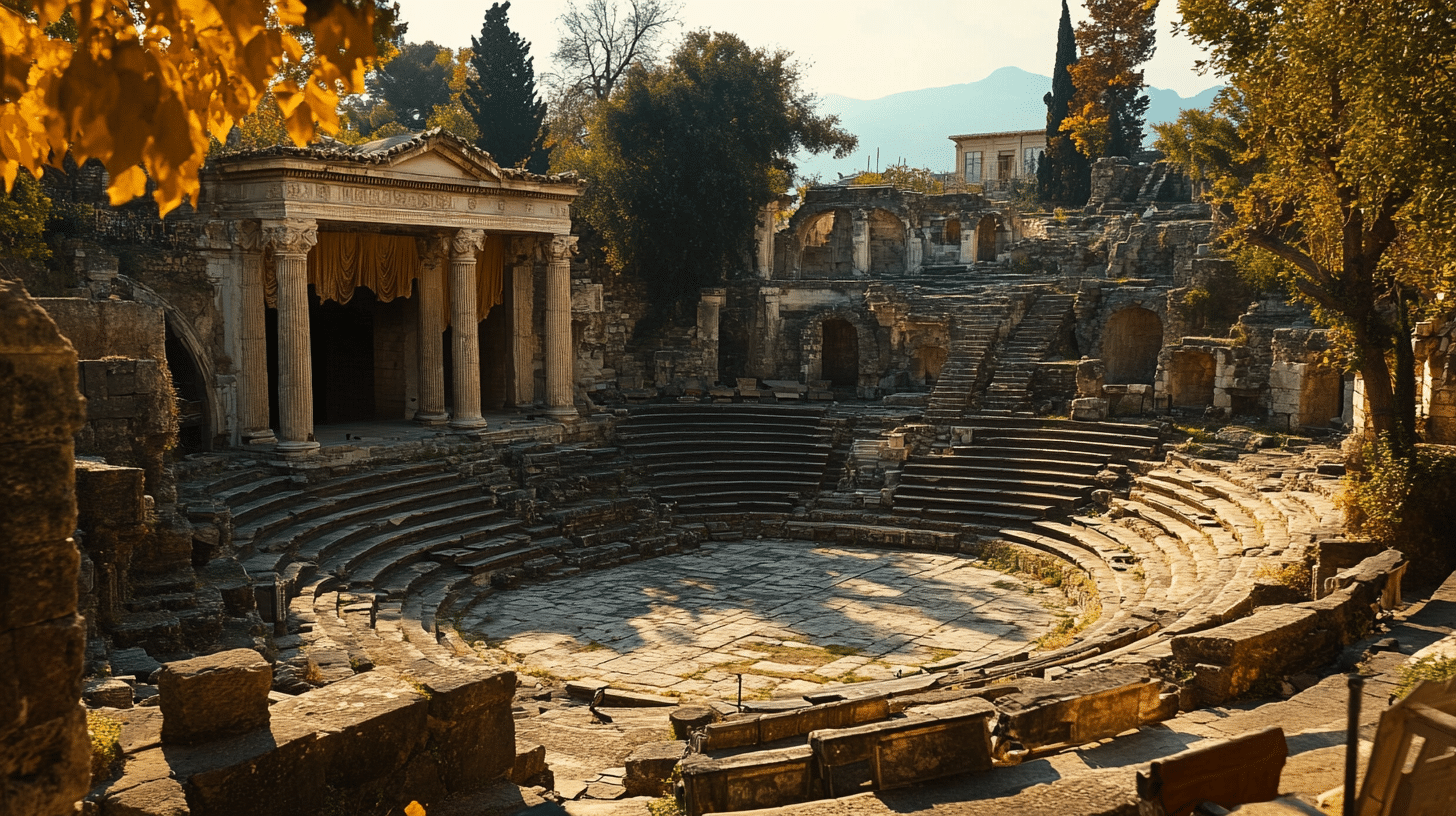
This open-air theater is where Greek plays were first performed.
Built into the side of the Acropolis hill, it could hold up to 17,000 people who came to see tragedies and comedies during festivals.
The theater’s design allowed even those sitting in the back rows to hear actors clearly without any modern sound equipment.
13. Palaestra at Olympia
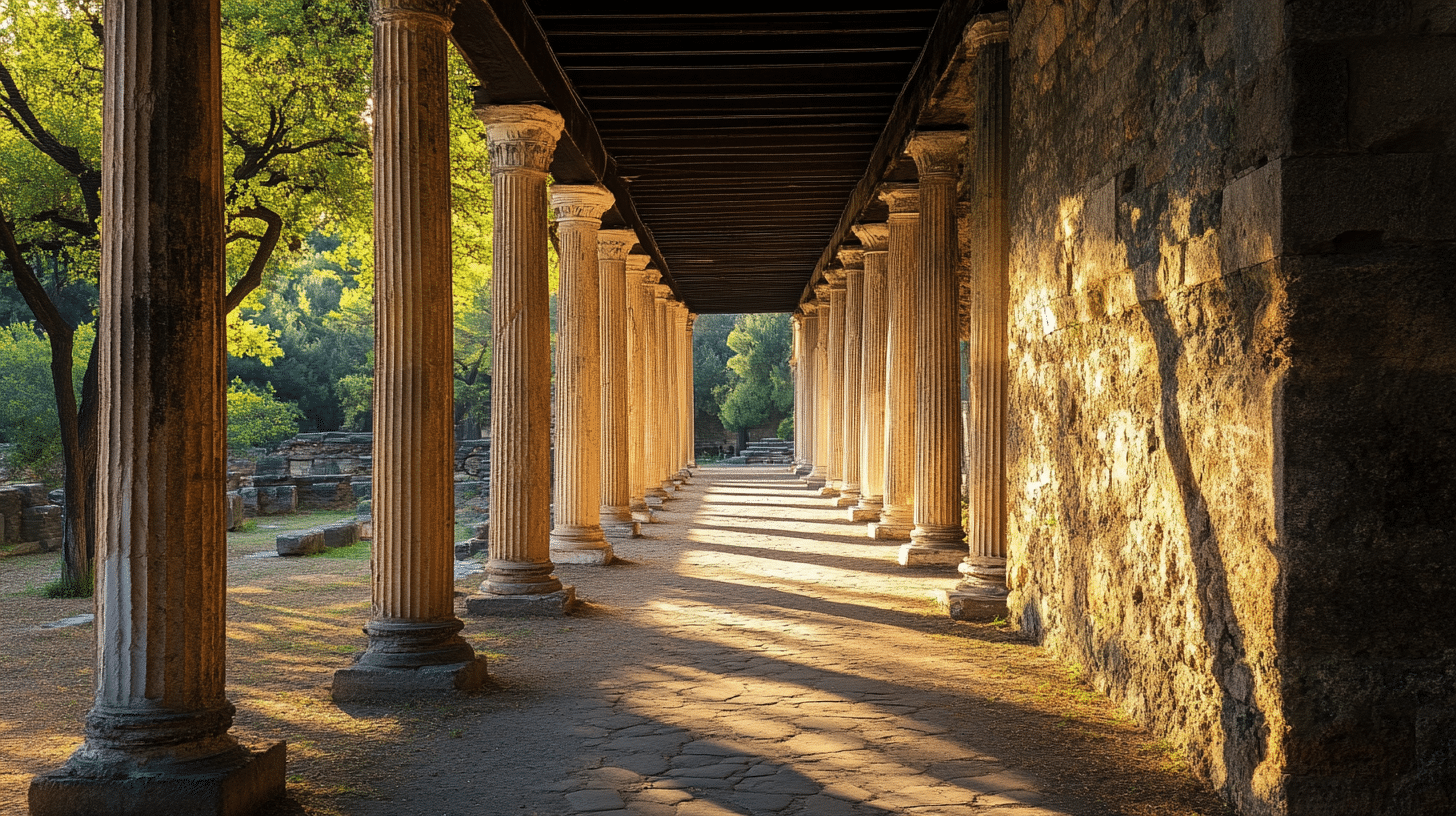
This square building with a central courtyard was where athletes trained before competing in the Olympic Games.
It had rooms for exercise, bathing, and rest.
The design shows how Greeks valued both physical fitness and social interaction, as the space encouraged both hard training and conversation among athletes.
Noteworthy Modern Greek Buildings
Modern Greek architecture mixes new ideas with respect for the country’s building history, creating structures that look to both the future and the past.
14. The Academy of Athens
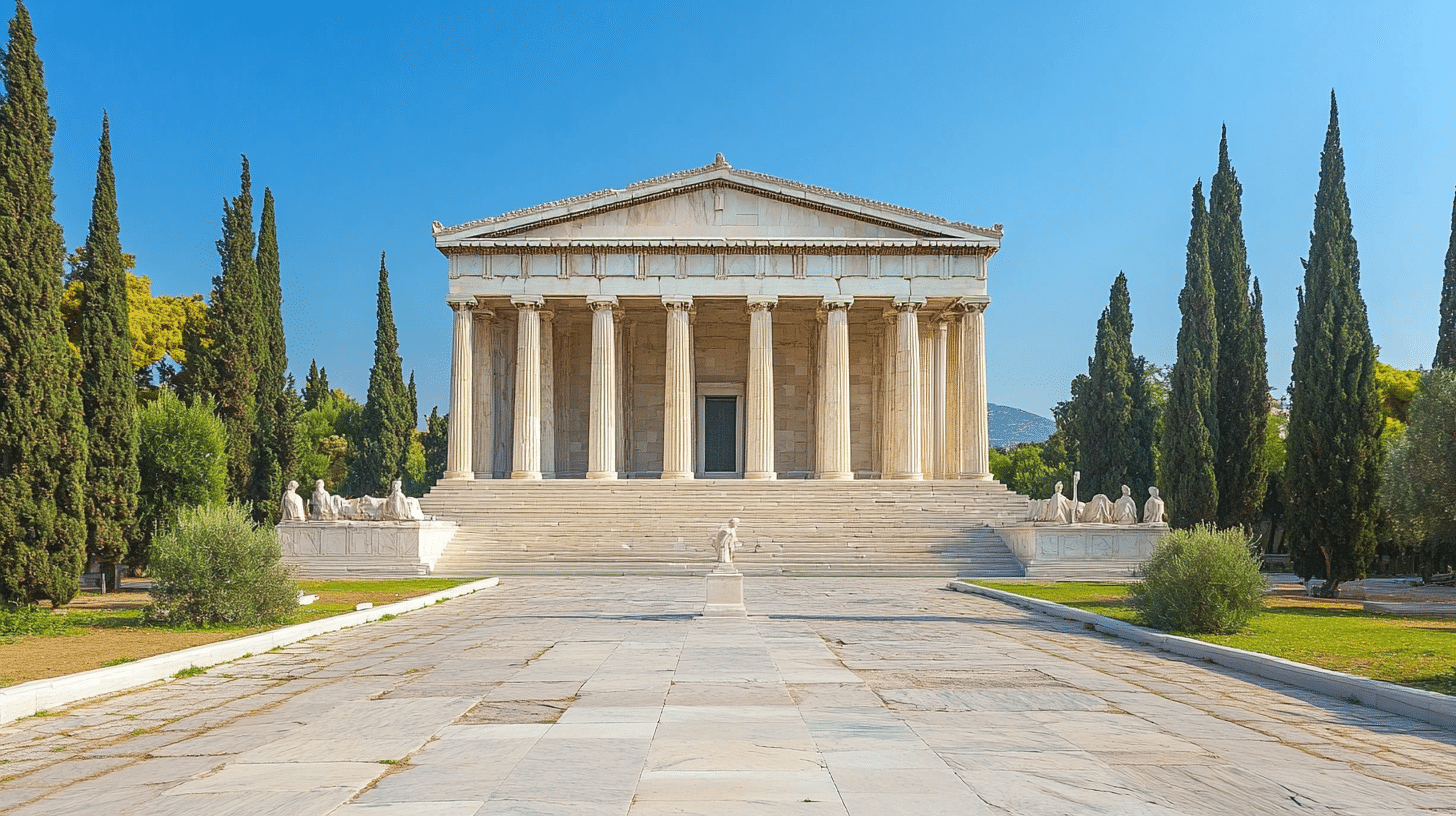
This 1800s building, with its white marble and tall columns, resembles an ancient Greek temple.
It houses Greece’s top academic institution and features statues of Athena and Apollo.
The design shows how modern Greeks connect with their ancient past through architecture.
15. Stavros Niarchos Foundation Cultural Center
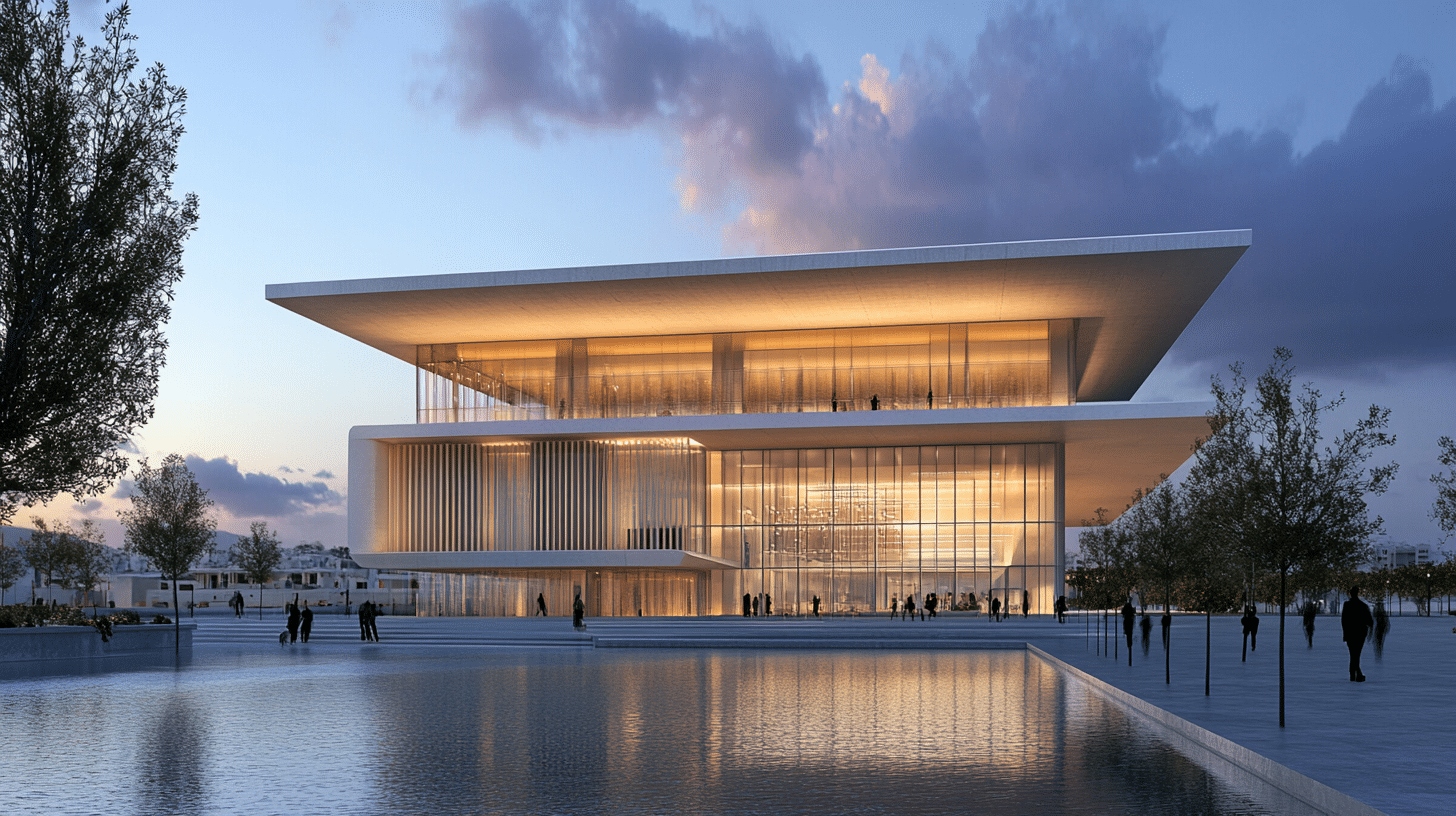
This green-friendly complex houses the National Library and Opera of Greece.
The building uses natural light, has a huge solar energy roof, and sits next to an artificial hill covered with plants.
Its clean lines and simple shapes remind visitors of ancient temples while using modern materials and methods.
16. Athens Olympic Sports Complex
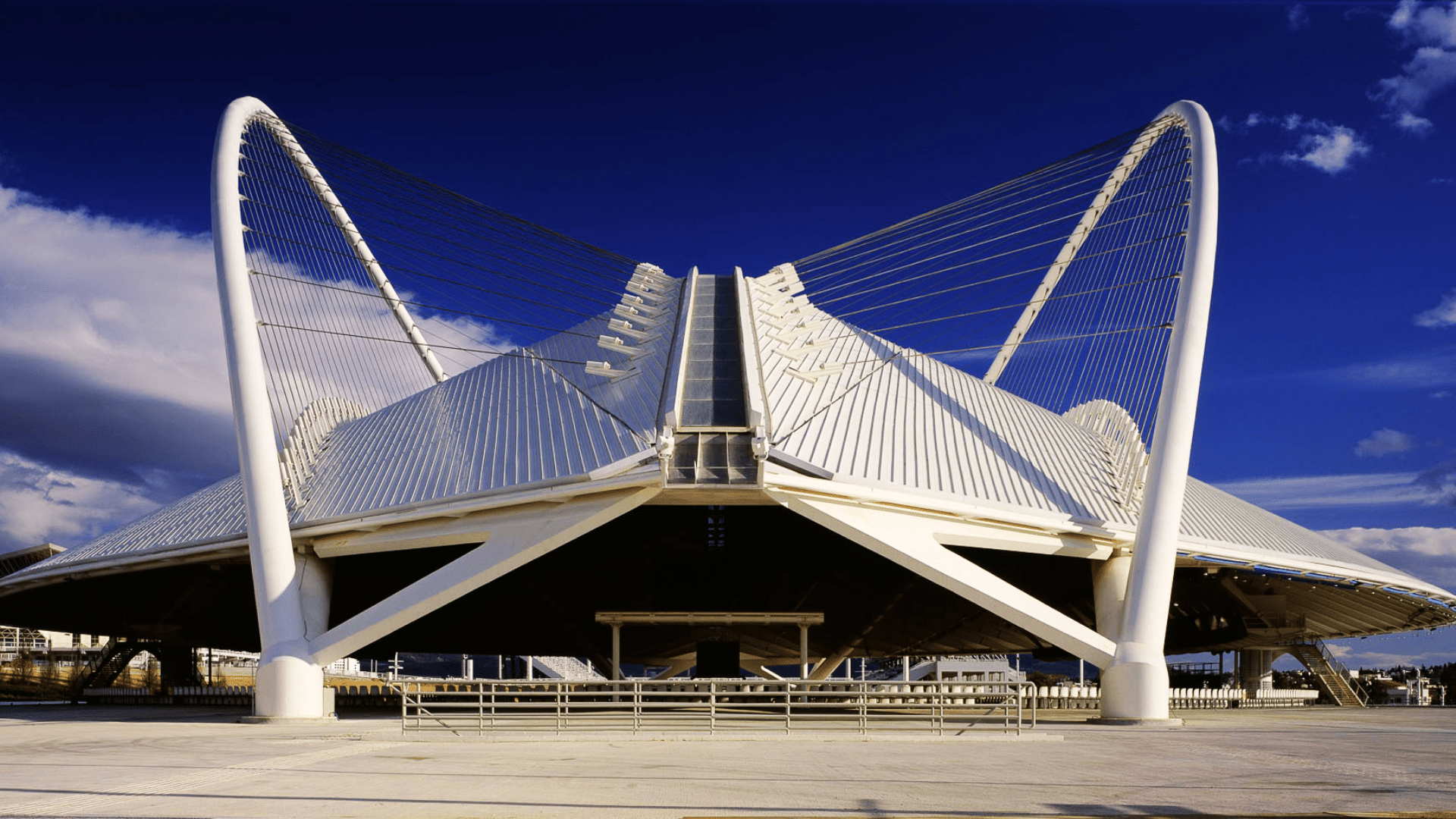
Built for the 2004 Olympic Games, this group of sports buildings features a main stadium with a roof that looks like it’s floating.
The design by Spanish architect Santiago Calatrava uses curves and open spaces that feel both modern and inspired by ancient Greek ideas about harmony and balance.
17. Acropolis Museum

This glass and concrete museum sits near the Acropolis hill and holds many ancient treasures.
The building’s see-through floors let visitors look down at the archaeological ruins beneath their feet.
The top floor is designed to match exactly with the Parthenon temple, creating a connection between the museum and the ancient site it celebrates.
Unique Architectural Wonders Outside Athens
Beyond the capital, Greece has remarkable buildings that show the country’s rich history and varied building styles across its islands and regions.
18. Palace at Knossos
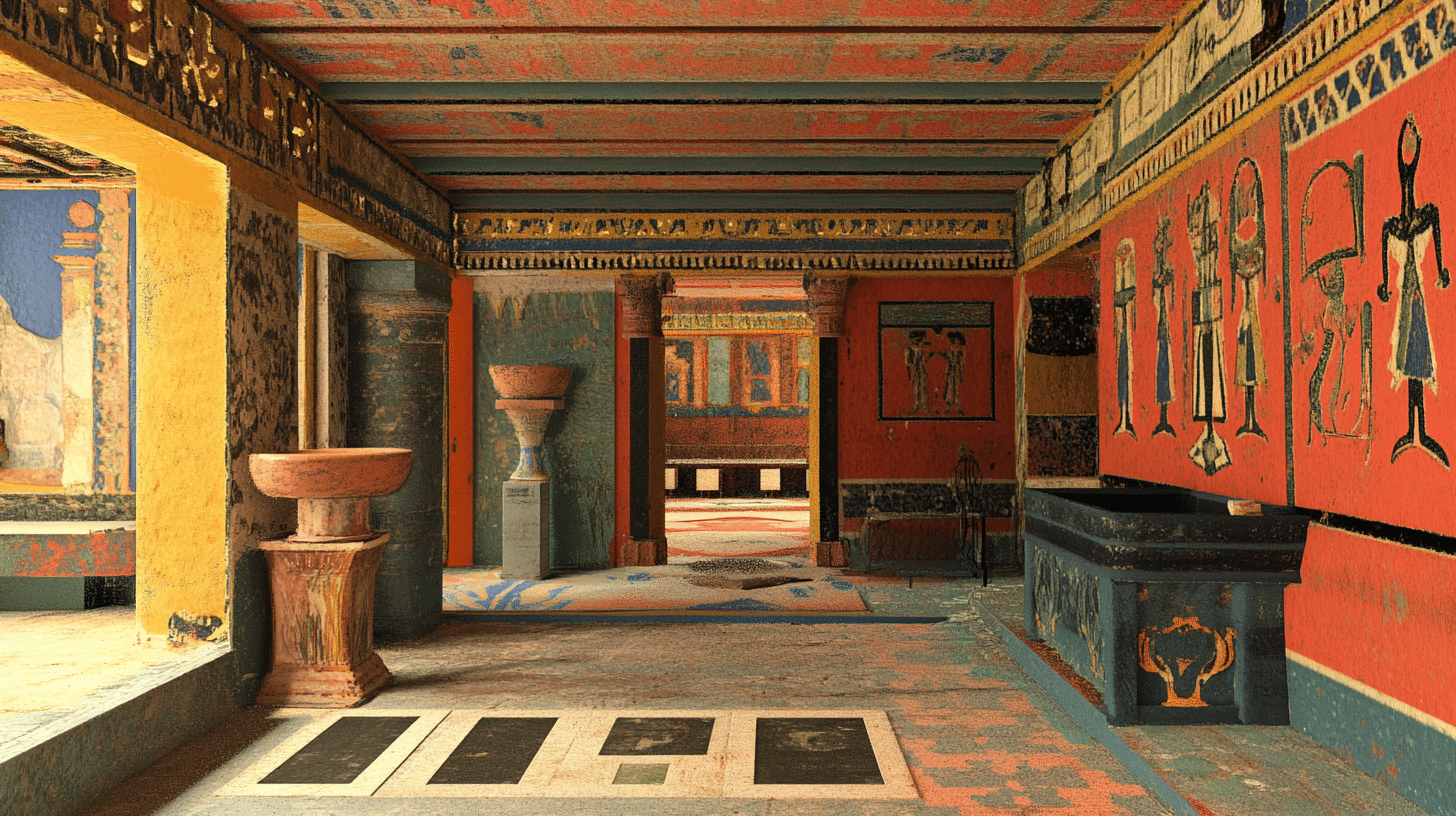
This complex building from the Minoan time (around 1700 BCE) had hundreds of rooms on multiple levels.
Some believe it was the source of the Minotaur maze story from Greek myths.
The palace had running water, good airflow, and colorful wall paintings, showing how advanced Minoan building skills were for their time.
19. Asklepion of Kos

This ancient healing center combined medicine with architecture to create spaces for treating the sick.
Built on three levels going up a hillside, it included temples, treatment rooms, and spaces where patients would sleep, hoping for healing dreams.
The design shows how ancient Greeks thought good buildings could help heal the body and mind.
Architectural Styles and Innovations
Greek builders didn’t just create beautiful structures—they developed design systems that shaped how buildings looked and functioned.
One of their most lasting contributions is their approach to columns, which were intended not only for support but also for style and proportion.
These column styles became the foundation for classical architecture around the world.
The Three-Column Orders
Greek architecture gave us three main column styles that changed how buildings look everywhere. Each style has its special features and uses.
The Greeks developed these distinct column orders over centuries, with each style reflecting different cultural values and artistic goals.
Architects today still study these designs for their perfect balance of form and function.
Doric
The simplest and most robust of the Greek column styles, Doric columns represent strength and direct power. Characterized by their sturdy appearance, these columns have:
- No base (they rise directly from the floor)
- A plain, simple top called a capital
- Thick, strong proportions
- Minimal decorative elements
Doric columns first appeared in mainland Greece and represent the earliest and most basic Greek architectural order.
They symbolize the straightforward, practical approach of early Greek builders.
You’ll often see Doric columns in the oldest and most important temples, including the famous Parthenon.
Ionic
More refined and tasteful compared to Doric columns, Ionic columns bring a sense of grace and sophistication to buildings. Their key features include:
- Scroll-shaped decorations called volutes at the top
- A more slender and taller design
- A distinctive base that sits on the floor
- More intricate and decorative appearance
Ionic columns originated in the Greek cities of Ionia in modern-day Turkey.
They reflect a more developed architectural thinking, showing how Greek design evolved to become more complex and artistic.
These columns often appear in smaller temples and important public buildings.
Corinthian
The most elaborate and ornate of the Greek column styles, Corinthian columns are a true work of art. Their defining characteristics are:
- Extremely detailed leaf patterns (typically acanthus leaves)
- Most complex and decorative capital
- Very elaborate and rich visual design
- Often used in the most important and impressive buildings
Developed later than Doric and Ionic styles, Corinthian columns represent the peak of Greek architectural decoration.
They became especially popular during the Hellenistic period and were later extensively used by Roman architects.
The Global Impact of Greek Architecture
Greek architectural principles have shaped design worldwide. From Washington D.C.’s government buildings to museums globally, these ancient concepts continue to inspire architects and designers.
Lasting Impact
These ancient designs continue to inspire architects worldwide.
From grand government buildings to intimate private homes, Greek column styles have found their way into diverse architectural spaces, including museums, cultural centers, and public spaces.
From Washington D.C. to cities across the globe, these classical column styles remain a proof to the timeless beauty and functionality of ancient Greek architectural design.
Practical Visitor Information
Planning your visit to Greece’s amazing buildings takes some thought to get the best experience.
The weather plays a big role in how much you’ll enjoy seeing these historical sites. Many Greek ruins offer little shade, so timing your trip is important for comfort and enjoyment.
Local experts and frequent visitors agree that certain months provide the perfect mix of good weather and smaller crowds.
- Spring (April to June): Comfortable temperatures with wildflowers blooming around ancient sites
- Fall (September to November): Clear skies and pleasant warmth without summer’s crowds
These times let you walk among the columns and structures at a relaxed pace.
The softer light during these seasons also creates beautiful views for photos and helps you see the details in the stonework better.
Avoiding the summer heat means you can spend more time exploring without feeling tired or overheated.
Additional Resources
- UNESCO World Heritage Sites – Greek Monuments
- Book: “The Story of Architecture” by Witold Rybczynski
Explore these remarkable structures and connect with a legacy that continues to shape our world.
Conclusion
Greek buildings show us how clever and creative people were long ago. The Greeks built amazing structures like the Parthenon without modern tools – just smart thinking and hard work.
Their buildings were strong, beautiful, and full of smart tricks, like making columns look perfectly straight when they weren’t.
These ancient monuments still inspire us today. When you see them, you can’t help but wonder: How did they do that? What can we learn from them?
The best part is you can visit these places and walk where ancient Greeks walked.
Touching the same stones they touched makes history feel real. Maybe these incredible buildings will give you ideas for your creations. After all, every great builder gets inspired by others first!

